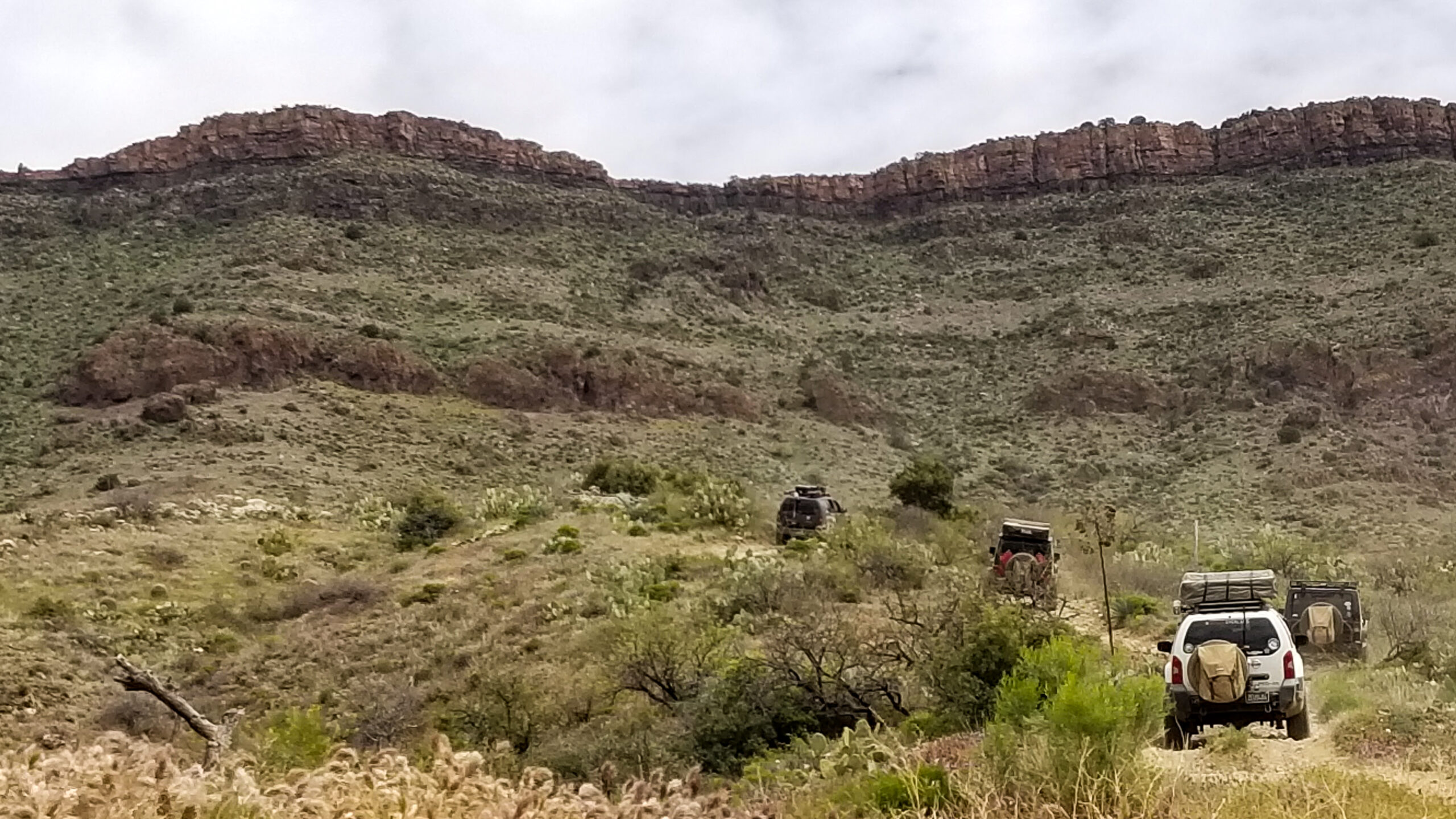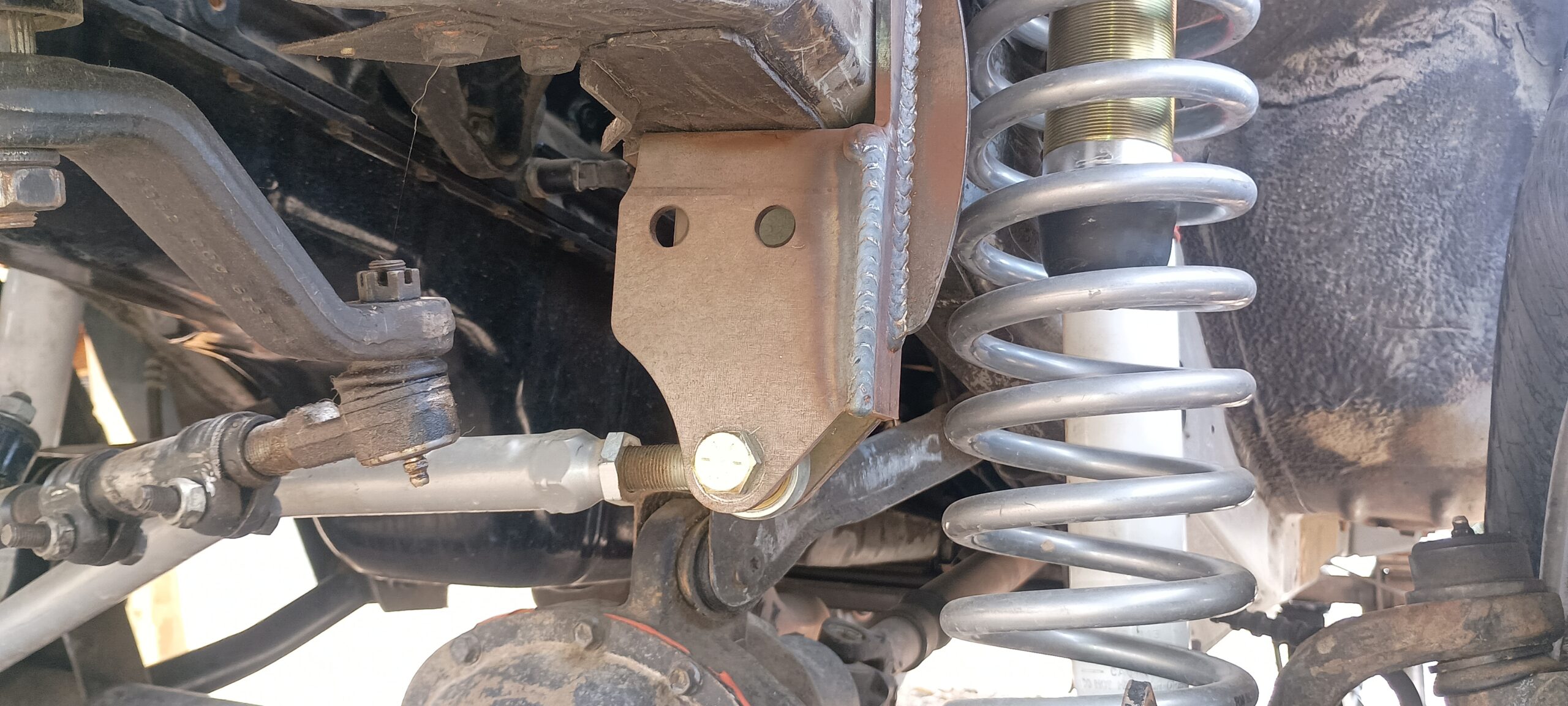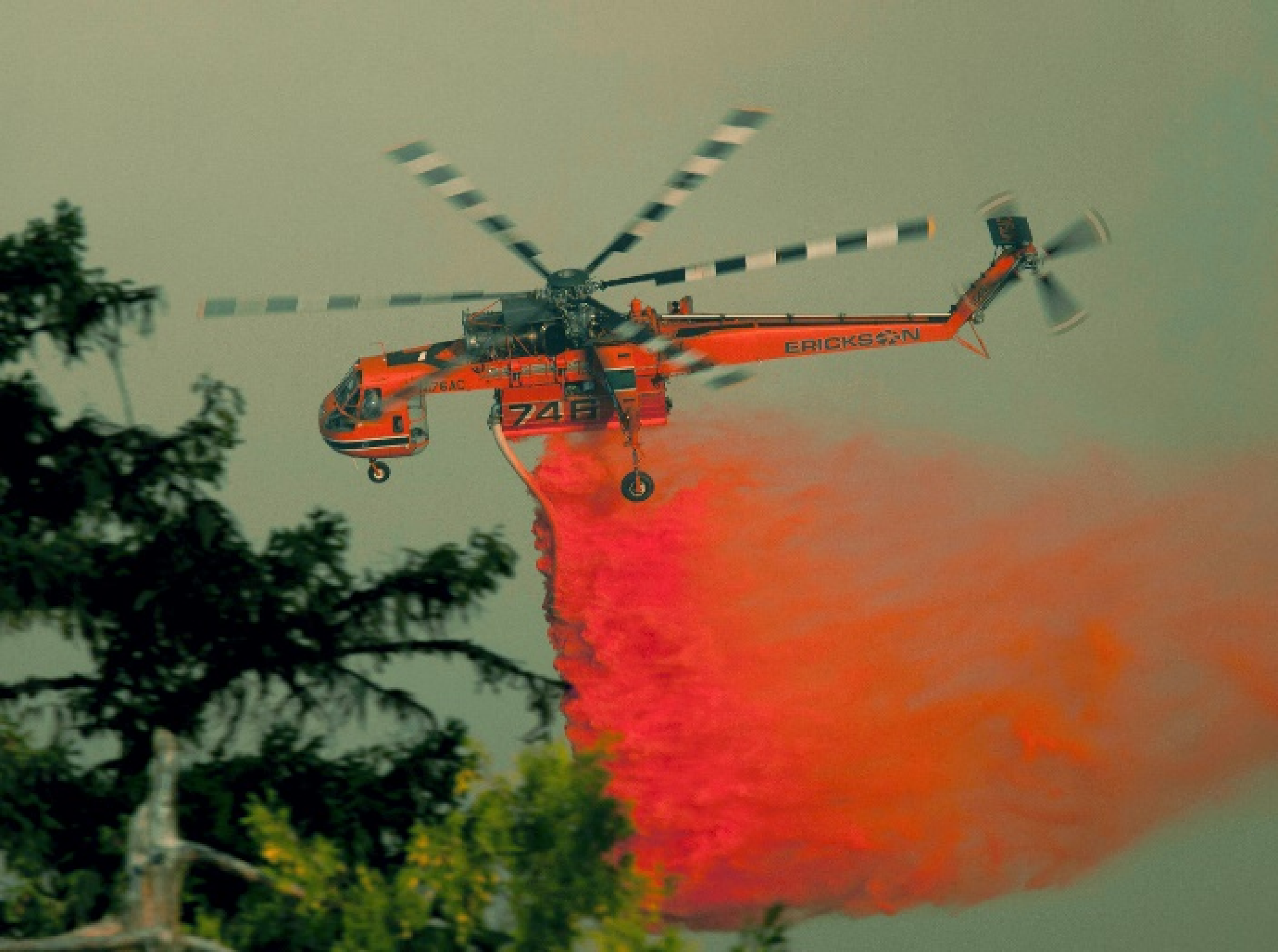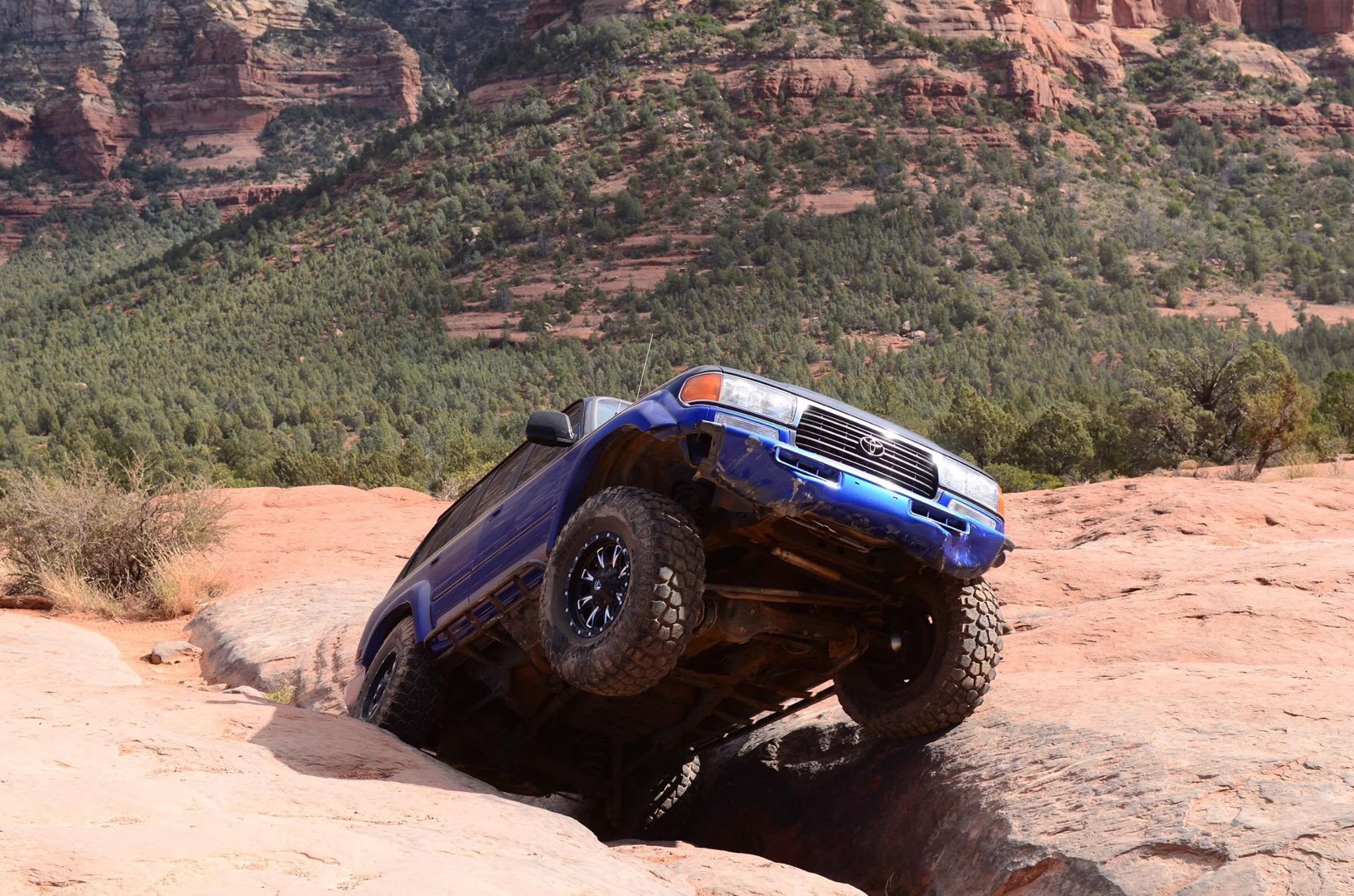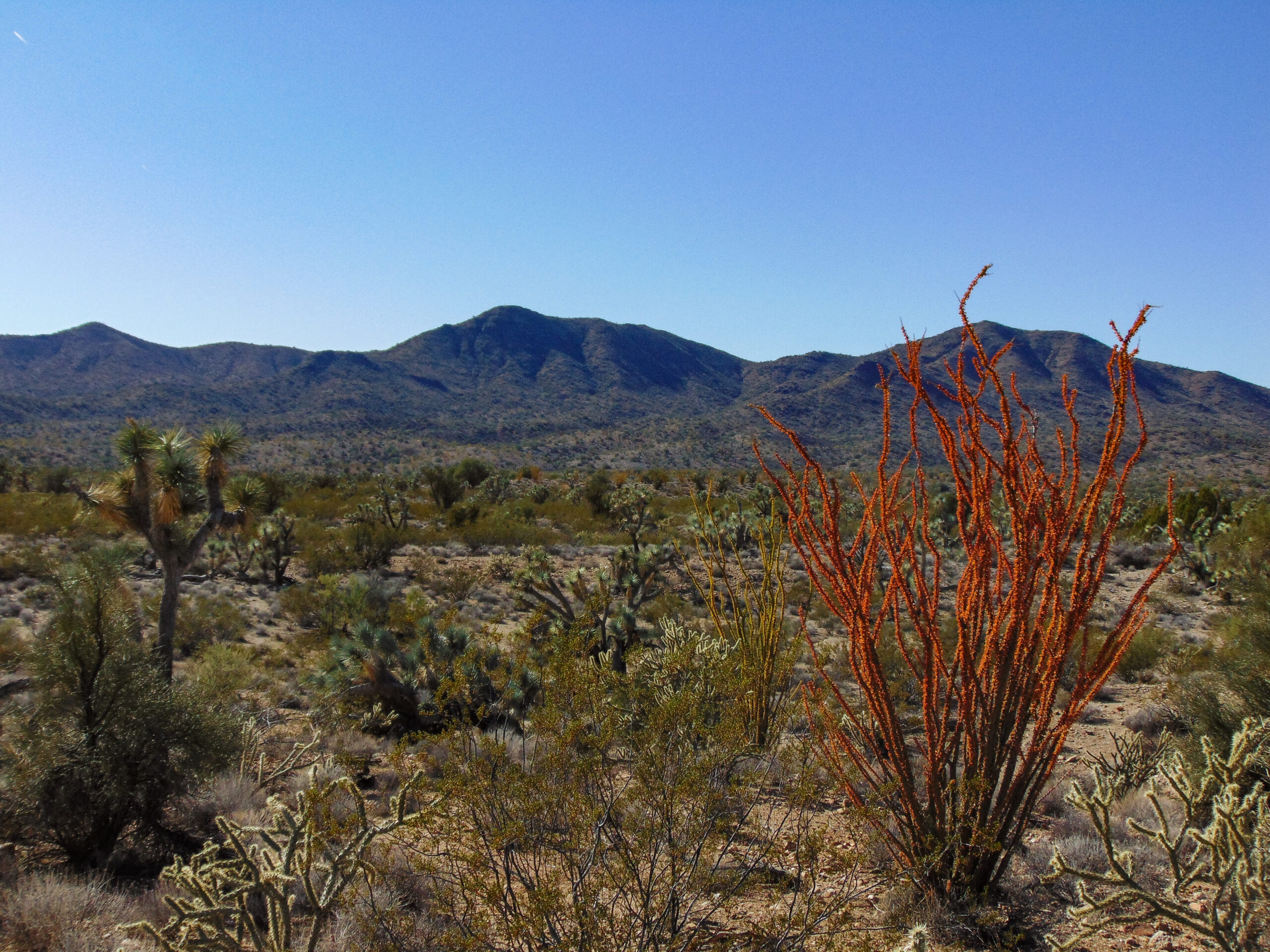The US Forest Service has proposed sweeping changes under a new rule to bolster its law enforcement capabilities on National Forest System (NFS) lands. While the intention may be to improve public safety and resource protection, the agency is overstepping its bounds by attempting to enforce state laws in an unconstitutional and unnecessary bid for power.
The proposed rule by the US Forest Service seeks to revise certain criminal prohibitions, streamline enforcement procedures, and change regulations related to the enforcement of management decisions concerning roads, motor vehicle use, camping, and public places on NFS lands. These changes include incorporating State traffic laws into Federal regulations, enhancing enforcement of wildfire prevention measures, and adding prohibitions related to controlled substances, alcohol, and disorderly conduct.
This proposal comes less than a year after the U.S. Forest Service issued regional forest order #03-00-23-002 declaring that all motor vehicle uses must comply with state laws. This essentially made any violation of state law on National Forest land a federal crime punishable by a $500 fine or six months in federal prison.
Constitutional Concerns and Lack of Legal Basis
At the heart of the debate lies the issue of constitutional authority. The US Forest Service, as a Federal agency, operates within the framework of Federal law. While it has interest-only jurisdiction over NFS lands, its authority is limited to enforcing Federal laws and regulations, not state laws. The Tenth Amendment of the United States Constitution reserves powers not delegated to the Federal government to the states or the people, explicitly delineating the boundary between Federal and state authority.
Without constitutional authority, the US Forest Service lacks the legal authority to enforce state laws. States have their own law enforcement agencies tasked with enforcing state statutes, including those related to traffic violations, controlled substances, and alcohol consumption. Existing Forest Service regulations at 43 CFR 8365.1-7 recognize the role of state law regarding public land management. By attempting to usurp this authority, the US Forest Service is encroaching upon the sovereignty of the states and undermining the principle of federalism.
Role of State Governments and Unnecessary Federal Intervention
State governments are best positioned to enforce their own laws within their respective jurisdictions. They have a thorough understanding of local needs, customs, and legal frameworks, allowing for more effective and responsive law enforcement. Moreover, state law enforcement agencies are accountable to state governments and the citizens they serve, ensuring greater transparency and accountability in the enforcement process.
The proposed rule represents an unnecessary expansion of Federal authority into areas traditionally reserved for state governance. It imposes burdensome regulations and enforcement mechanisms on NFS lands, potentially creating confusion and conflict with state law enforcement agencies. Rather than enhancing public safety, this could lead to jurisdictional disputes and inefficiencies in law enforcement efforts.
Read the proposed rule published in the federal register below.
AGENCY:
Forest Service, Agriculture.
ACTION:
Proposed rule; request for public comment.
SUMMARY:
The Forest Service (Forest Service or Agency), United States Department of Agriculture, is proposing to revise the Forest Service’s criminal prohibitions to enhance consistency of the Forest Service’s law enforcement practices with those of State and other Federal land management agencies. The Forest Service is proposing to streamline enforcement of criminal prohibitions in related to fire and use of vehicles on National Forest System roads and trails by eliminating the requirement to issue an order for enforcement.
DATES:
Comments on the proposed rule must be received in writing by December 4, 2023.
ADDRESSES:
Comments, identified by RIN 0596-AD57, may be submitted via one of the following methods:
1. Federal eRulemaking Portal: https://www.regulations.gov. Follow the instructions for sending comments.
2. Mail: Director, Law Enforcement and Investigations Staff, Mail Stop 1140, 1400 Independence Avenue SW, Washington, DC 20250-1140.
3. Hand Delivery/Courier: Director, Law Enforcement and Investigations Staff, Room 1SC, 201 14th Street SW, Washington, DC.
Comments should be confined to issues pertinent to the proposed rule; should explain the reasons for any recommended changes; and should reference the specific section and wording being addressed, where possible. All timely comments, including names and addresses when provided, will be placed in the record and will be available for public review and copying. The public may review comments at the Office of the Director, Law Enforcement and Investigations Staff, Room 1SC, 201 14th Street SW, Washington, DC, during normal business hours. Visitors are encouraged to call ahead to 703-605-4730 to facilitate entry into the building. Comments may also be viewed on the Federal eRulemaking Portal at https://www.regulations.gov. In the search box, enter “RIN 0596-AD57,” and click the “Search” button.
FOR FURTHER INFORMATION CONTACT:
Gene Smithson, Assistant Director—Investigations, Law Enforcement and Investigations Staff, 703-605-4730 or wilmer.smithson@usda.gov. Individuals who use telecommunication devices for the hearing impaired may call the Federal Relay Service at 800-877-8339 between 8:00 a.m. and 8:00 p.m. Eastern Time, Monday through Friday.
SUPPLEMENTARY INFORMATION:
Background and Need
This proposed rule would revise certain criminal prohibitions in 36 CFR part 261, subpart A, to enhance consistency of the Forest Service’s law enforcement practices with those of State and other Federal land management law enforcement agencies. In addition, this proposed rule would streamline enforcement of some of the criminal prohibitions found in 36 CFR part 261, subpart B, which are enforceable only through issuance of an order, by moving them to 36 CFR part 261, subpart A, which contains criminal prohibitions that are enforceable without issuance of an order.
Forest Service law enforcement personnel continue to encounter a significant volume of violations for simple possession of controlled substances and drug paraphernalia. Agency personnel routinely deal with under-age alcohol possession on National Forest System (NFS) lands. These violations pose a threat to the safety of visitors to NFS lands as well as to Forest Service personnel. This proposed rule would enhance the Forest Service’s authority to address public safety issues by adding prohibitions relating to controlled substances, drug paraphernalia, and alcoholic beverages. These proposed prohibitions would enable the Forest Service to enforce more effectively violations on NFS lands for simple possession of controlled substances, possession of alcoholic beverages in violation of State law (for open containers or under-age ( printed page 68036) drinking), and furnishing alcoholic beverages to minors. The proposed rule also would authorize the Forest Service to enforce violations for the possession of drug paraphernalia if prohibited by State law. These proposed changes are intended to align the Forest Service’s law enforcement practices more closely with those of State and local law enforcement agencies.
Additionally, the proposed rule would update the prohibitions to enhance protection of persons visiting and working on NFS lands from theft of personal property and from disorderly conduct by other visitors. The proposed rule would enhance enforcement of wildfire prevention prohibitions by moving them from 36 CFR part 261, subpart B, which requires issuance of an order, to 36 CFR part 261, subpart A, which does not, and by adding a prohibition banning exploding targets year-round. The proposed rule also would make other revisions such as updating the prohibitions relating to off-road vehicles and updating the penalty for violating the criminal prohibitions in 36 CFR part 261 consistent with current statutory law.
Proposed revisions to specific types of public safety prohibitions are discussed below.
Prohibition Relating to Controlled Substances
It is a violation of Federal law for a person knowingly or intentionally to possess controlled substances (21 U.S.C. 844(a)). Forest Service law enforcement officers enforce 21 U.S.C. 844(a) on NFS lands, and in some circumstances off these lands, under the National Forest System Drug Control Act of 1986 (16 U.S.C. 559b-559g). A violation of 21 U.S.C. 844(a) without aggravating factors is classified as a Class A misdemeanor. With aggravating factors, this type of violation is classified as a felony (18 U.S.C. 3559(a)).
Violations of 21 U.S.C. 844(a) require referral to the appropriate United States Attorney’s Office for the filing of a complaint or information and prosecution before a United States District Court judge. Guidelines established by the United States Attorney’s Office for prosecutions under 21 U.S.C. 844(a) are based upon the amount of the controlled substance involved in the violation. In many instances, violations for simple possession of a controlled substance on NFS lands are not prosecuted under 21 U.S.C. 844(a) because they involve small amounts that are insufficient to meet these prosecutorial guidelines.
The Forest Service’s criminal prohibitions at 36 CFR part 261, subpart A, do not expressly prohibit the possession of controlled substances on NFS lands. To provide an alternative to proceeding under 21 U.S.C. 844(a), the Forest Service is proposing to revise 36 CFR part 261, subpart A, to prohibit knowingly or intentionally possessing a controlled substance in violation of Federal law. The proposed rule also would add a definition for the term “controlled substance” that tracks the definition of that term in the Controlled Substances Act (21 U.S.C. 801 et seq.).
With these changes, the possession of small amounts of a controlled substance could be handled through issuance of a notice of violation by a Forest Service law enforcement officer and prosecution before a United States magistrate judge and would be classified as a Class B misdemeanor. Forest Service law enforcement personnel would continue to refer cases involving larger amounts of controlled substances that meet prosecutorial guidelines to the appropriate United States Attorney’s Office.
Prohibition Relating to Drug Paraphernalia
Possession of drug paraphernalia is not a violation of Federal law (see 21 U.S.C. 863(d)). Some States prohibit possession of drug paraphernalia only if it contains the residue of a controlled substance. Other States prohibit possession of drug paraphernalia even if it does not contain the residue of a controlled substance. The proposed rule would add a prohibition that would prohibit knowingly or intentionally possessing drug paraphernalia in either situation when it is in violation of State law.
Prohibitions Relating to Alcoholic Beverages
The Forest Service has limited authority in 36 CFR part 261 to address underage drinking and other violations of State law relating to alcoholic beverages, such as State laws prohibiting open containers of alcoholic beverages and furnishing alcoholic beverages to minors. The current authority is contained in 36 CFR 261.58(bb), which prohibits possession of an alcoholic beverage as defined by State law when enforced through issuance of an order issued under 36 CFR part 261, subpart B. The proposed rule would add two prohibitions relating to alcoholic beverages (possessing an alcoholic beverage in violation of State law and providing an alcoholic beverage to a minor in violation of State law) to 36 CFR part 261, subpart A. These changes would make the prohibitions generally applicable to NFS lands and enforceable without issuance of an order. These proposed changes are intended to allow the Forest Service to address more effectively the use of NFS lands at gatherings where alcoholic beverages are consumed by giving Forest Service law enforcement officers the same enforcement options as their State and local counterparts.
The prohibition in 36 CFR 261.58(bb) would be retained to allow the Forest Service to prohibit consumption of alcoholic beverages temporarily in specific areas of NFS lands when appropriate to protect public safety, such as at a large event, regardless of whether consumption of alcoholic beverages is in violation of State law.
Protection of Persons on NFS Lands
Both Federal and State laws apply to the national forests (16 U.S.C. 480). Generally, States enforce State laws, while Forest Service law enforcement personnel enforce Federal laws, including the criminal prohibitions in 36 CFR part 261, subparts A and C, and in orders issued under 36 CFR part 261, subpart B. In most cases, the Federal laws and prohibitions relate to the Agency’s resource protection responsibilities. However, with the urbanization and development of areas near NFS lands, crimes against persons and personal property have become an increasing public safety concern.
The Forest Service cooperates with State and local law enforcement agencies in the execution of their responsibilities related to NFS lands. Under the Cooperative Law Enforcement Act of 1971 (16 U.S.C. 551a), the Forest Service has entered into reimbursable agreements with some State and local law enforcement agencies (usually a county sheriff’s office) for the protection of persons and their property on NFS lands where these lands and facilities account for increased visitor use.
Over time, however, it has become evident that reimbursement through the cooperative law enforcement program alone cannot always provide for the appropriate level of protection. Many local law enforcement agencies find that their limited personnel, the remote location of NFS lands, and the seasonal nature of use those lands receive impede rapid response to crimes committed on NFS lands. When a person is victimized by theft of or damage to personal property on NFS lands—for example at a campsite or a trailhead parking lot—and State or local enforcement personnel are unable to respond, Forest Service law enforcement personnel have limited ( printed page 68037) authority to assist. The proposed rule would add a prohibition that would allow Forest Service law enforcement personnel to take appropriate action in response to theft of or damage to personal property on NFS lands.
To protect persons on NFS lands, the proposed rule also would revise the prohibitions relating to disorderly conduct. A significant increase in visitation to national forests and grasslands has coincided with an increase in incidents of public behavior that threatens the safety of others. Forest Service law enforcement personnel frequently encounter situations in which a person makes lewd or obscene comments to another person; follows another person around, including into a restroom, with no legitimate purpose and in a threatening manner; or engages in indecent exposure. The proposed rule would revise the disorderly conduct prohibitions in 36 CFR 261.4 to address these situations.
Traffic Prohibitions
The proposed rule would incorporate State traffic law in § 261.12 so that State traffic law is enforceable as Federal traffic law. Specifically, the proposed rule would incorporate two commonly cited violations of State traffic law: operating a motor vehicle without a valid license and operating a motor vehicle while under the influence of an alcoholic beverage or a controlled substance. The proposed rule also would incorporate a catch-all prohibition that would incorporate any other State traffic laws so that they are enforceable as Federal traffic law.
Prohibitions Relating to Prevention of Wildfire
Wildland fires, including catastrophic wildfires, have increased in frequency and severity on NFS lands. An accumulation of hazardous fuels combined with severe drought have resulted in extreme fire conditions and very large fires. Forest Service estimates indicate that more than 460 million acres of all vegetated lands are at moderate to high risk from uncharacteristically large wildfires, encompassing many wildland-urban interfaces with high densities of structures that intermingle with undeveloped wildlands. In 2022, more than 7.5 million acres burned in the United States, and more than 2,700 structures were destroyed, including 1,294 residences. These fires have long-term and sometimes irreversible consequences, including damage to watersheds that supply drinking water and damage to critical habitat for endangered species. The Forest Service also incurs significant annual costs related to wildland fire suppression.
This proposed rule would allow the Forest Service to take additional enforcement actions to prevent wildfires on NFS lands. The possession and use of fireworks or other pyrotechnic devices are not generally prohibited on NFS lands. However, they may be prohibited in areas specified in an order issued under 36 CFR 261.52(f). Typically, the Forest Service issues orders under 36 CFR 261.52(f) on a seasonal basis when the threat of fire is high. However, given the higher risk and greater severity of wildland fires, the Agency has determined that a year-round ban is necessary to protect NFS lands and resources, persons using those lands, and surrounding communities from the threat of catastrophic wildfire. The proposed rule would move these prohibitions to 36 CFR part 261, subpart A, so that they are enforceable anywhere on NFS lands during any season without issuance of an order under 36 CFR part 261, subpart B.
Prohibition Relating to Exploding Targets
Exploding targets—targets that explode when struck by a bullet—have become popular throughout the United States, and their use is increasing on NFS lands. Exploding targets can be purchased legally and are intended for use as a target for firearms practice. However, when detonated by a bullet, exploding targets often result in a fireball that can ignite vegetation and surrounding materials and spread to adjacent areas. A growing number of wildfires on NFS lands have been caused by exploding targets; from 2012 to 2022, multiple fires burned over 139,000 acres as result of exploding targets, costing taxpayers millions of dollars to suppress. Additionally, trash is often left behind after exploding targets are used, including undetonated targets, which present additional safety risks for visitors, employees, and firefighters.
Exploding targets are regulated by the Forest Service as explosives under the Agency’s authority to issue orders banning the use of explosives in specified areas under 36 CFR 261.52(b). Because exploding targets present a significant fire hazard at any time of year, the Forest Service is proposing to add a generally applicable prohibition to 36 CFR 261.5 that does not require issuance of an order and that would ban possession as well as use of an exploding target on NFS lands.
Exploding targets generally consist of two separate chemical components (usually an oxidizer like ammonium nitrate and a fuel such as aluminum or another metal) that become a binary explosive when combined. The individual components, which often are pre-packaged together, are kept separate within individual containers for sale and transport. Kept separate, the components are not explosives. Combined, however, the components become explosive and thus are subject to Federal explosive laws and regulations. To avoid triggering Federal law until they are ready to be used and to minimize the risk of injury, the components are typically combined at the site where the exploding targets are going to be used. This proposed rule would ban the possession and use of an exploding target (the binary explosive that is created by combining the two components).
The Forest Service recognizes hunting and safe target shooting as valid uses of NFS lands. This proposed rule would not affect these valid uses.
Proposed Regulatory Revisions
A section-by-section description of the proposed rule follows.
Section 261.1b Penalty
The proposed rule would make a technical change to 36 CFR 261.1b, which governs penalties for violating a criminal prohibition in 36 CFR part 261, to make it consistent with current statutory law. The regulations at 36 CFR 261.1b refer to the penalty in 16 U.S.C. 551, which provides that a violation shall be punished by a fine of not more than $500, imprisonment for not more than six months, or both. Violations were classified as petty offenses.
The Comprehensive Crime Control Act of 1984 established categories of offenses based on the maximum amount of imprisonment for each offense (18 U.S.C. 3559). Offenses with a maximum term of six months of imprisonment, such as those offenses covered by 36 CFR part 261, are considered Class B misdemeanors. The Comprehensive Crime Control Act of 1984 also prescribes a range of fines for Class B misdemeanors, depending on specific circumstances associated with the violation, with a maximum fine of $5,000 for a person and $10,000 for an organization (18 U.S.C. 3571). The proposed revision reflects this statutory change and provides for exceptions when a statute establishing an offense expressly sets a different penalty.
Section 261.2 Definitions
The proposed rule would add six definitions to 36 CFR 261.2 for the terms “alcoholic beverage,” “controlled ( printed page 68038) substance,” “exploding target,” “firework,” “pyrotechnic device,” and “recreation site.” The proposed rule also would revise the definition of “developed recreation site.”
The term “alcoholic beverage” would be defined to have the same meaning as under State law. This definition is consistent with the current use of the term in 36 CFR 261.58(bb).
The term “controlled substance” would be defined to have the same meaning as in the Controlled Substance Act (21 U.S.C. 801 et seq.).
The term “exploding target” would be defined to mean a binary explosive that is designed to explode when struck by a bullet. Exploding targets consist of two components that are combined to create the explosive. Individually, the parts are inert. However, when combined, they become explosive.
The term “firework” would be defined to have the same meaning as in 27 CFR 555.11. As defined in those regulations, the term “firework” means any composition or device that is designed to produce a visible or an audible effect by combustion, deflagration, or detonation and that meets the definition of “consumer fireworks” or “display fireworks” as defined by 27 CFR 555.11. This definition is consistent with the Forest Service’s current interpretation of what constitutes a firework.
The term “pyrotechnic device” would be defined to have the same meaning as the term “articles pyrotechnic” in 27 CFR 555.11. As currently defined in those regulations, the term “articles pyrotechnic” means devices for professional use that are similar to consumer fireworks in chemical composition and construction but are not intended for consumer use. This definition is consistent with the Forest Service’s current interpretation of what constitutes a pyrotechnic device.
This proposed rule would amend 36 CFR 261.2 by revising the definition of “developed recreation site” and adding a definition of “recreation site” to be consistent with the definitions of those terms in Chapter 50 of the Forest Service’s Recreation Site Handbook, Forest Service Handbook 2309.13. Chapter 50 of the Recreation Site Handbook defines the terms “developed recreation site” and “recreation site” based on the scale of development at a site. Chapter 50 of the Recreation Site Handbook also contains a recreation site development scale showing the characteristics of each scale of development.
The term “developed recreation site” is currently defined in 36 CFR 261.2 as “an area which has been improved or developed for recreation.” The proposed definition of “developed recreation site” would be more specific than the current definition and would match the definition of that term in Chapter 50 of the Recreation Site Handbook. As defined in Chapter 50 of the Recreation Site Handbook, a developed recreation site is “a recreation site that has a development scale of 3, 4, or 5 (sec. 50.5, ex. 01)”. Recreation sites with a development scale of 3, 4, or 5 range from moderate to extensive site development.
Additionally, the proposed rule would add a definition of “recreation site” to 36 CFR 261.2 that tracks the definition of that term in Chapter 50 of the Recreation Site Handbook. Chapter 50 of the Recreation Site Handbook defines the term “recreation site” as “an area that is improved, developed, or otherwise authorized by the Forest Service for recreation and that has a development scale of 0, 1, 2, 3, 4, or 5 (sec. 50.5, ex. 01).” Under this added definition, the term “recreation site” would cover a broader range of areas than the term “developed recreation site” and would include recreation sites with a development scale of 0, 1, or 2, which range from no to little site modification.
Currently, the term “developed recreation site” is used in the criminal prohibitions in 36 CFR part 261, subpart A, specifically, in 36 CFR 261.10(d)(1), (i), and (j) and 261.16. These prohibitions would continue to apply only to developed recreation sites, that is, to recreation sites that have a development scale of 3, 4, or 5. The prohibitions would not be broadened to apply to recreation sites with a development scale of 0, 1, or 2, which have little to no site modification, because the public may not have adequate notice that such a site exists, given the lack of development, and that a prohibition applies.
In contrast, the term “recreation site” would be substituted for “developed recreation site” each time the latter term appears in prohibitions designated by order in 36 CFR part 261, subpart B, specifically, in 36 CFR 261.52(d) and 261.58(b) and (d). Prohibitions designated by orders can be broader in scope and can cover recreation sites with a development scale of 0, 1, or 2 because orders specify the area to which they apply.
Section 261.4 Disorderly Conduct
The prohibitions in 36 CFR 261.4 pertain to disorderly conduct. This proposed rule would add a criminal intent element, or mens rea, that the violator acted intentionally or recklessly in committing the offense. To be cited for a violation of disorderly conduct, a person must have committed one of the acts described in paragraphs (a) through (c) with the intent to cause, or recklessly to create a substantial risk of causing, public alarm, nuisance, jeopardy, or violence. The criminal intent standard would require a showing that the violator knowingly intended to cause public alarm, nuisance, jeopardy, or violence by the prohibited acts or words. Alternatively, the reckless standard, which has a lesser mens rea, would require a showing that the violator was aware of, but consciously disregarded, the substantial risk that the prohibited acts or words would cause public alarm, nuisance, jeopardy, or violence.
This proposed rule also would revise the types of conduct that would constitute disorderly conduct when committed with the requisite mens rea. The current paragraph (a) prohibits only fighting. This proposed rule would add threatening or other violent behavior. This proposed rule also would revise paragraph (b) and would substitute it for current paragraphs (b) and (c), which cover “fighting words,” such as utterances that are likely to provoke violence or unlawful acts. Fighting words are not protected speech under the First Amendment. Revised paragraph (b) would cover fighting words by prohibiting “making an utterance or performing an act . . . that is made or performed in a manner likely to inflict injury or to incite an immediate breach of peace.” Because revised paragraph (b) also would cover an utterance or act that is obscene or threatening when committed with the intent to cause public alarm, nuisance, jeopardy, or violence, or recklessly create a risk thereof, revised paragraph (b) would address situations when a person (1) makes lewd or obscene comments short of solicitation to another person; (2) follows another person around, including into a restroom, with no legitimate purpose if done in a threatening manner; and (3) commits indecent exposure. This proposed rule also would redesignate paragraph (d) as paragraph (c) and would provide further instruction as to what constitutes unreasonable noise in violation of the disorderly conduct prohibition.
Section 261.5 Fire
The Forest Service proposes to add paragraphs (h), (i), and (j) to 36 CFR 261.5, which contains prohibitions relating to fire. The prohibitions in proposed paragraphs (h), (i), and (j) are currently enforceable only through ( printed page 68039) issuance of an order under 36 CFR 261.52. Moving these prohibitions to § 261.5 would make them generally applicable to NFS lands year-round and enforceable without issuance of an order.
Specifically, proposed paragraph (h) would prohibit possessing or using an exploding target or any kind of firework or other pyrotechnic device. The prohibition banning the possession or use of fireworks or other pyrotechnic devices is currently enforced in areas specified by an order issued under 36 CFR 261.52(f). The proposed rule would move this prohibition to 36 CFR part 261, subpart A, which would make it generally applicable to NFS lands year-round and enforceable without issuance of an order. The proposed rule also would add a prohibition to paragraph (h) that would ban the possession and use of exploding targets.
Proposed paragraph (i) would prohibit violating any State law concerning burning or fires or any State law whose purpose is to prevent or restrict the spread of fire. This prohibition is currently enforced in areas specified by an order issued under 36 CFR 261.52(k). The Forest Service may incorporate State law concerning burning or fires or any State law which is for the purpose of preventing or restricting the spread of fire in an order issued under § 261.52(k). Violations of these orders constitute violations of Federal law. The proposed rule would move this prohibition to 36 CFR part 261, subpart A, which would make it generally applicable to NFS lands year-round and enforceable without issuance of an order.
Proposed paragraph (j) would prohibit operating or using any internal or external combustion engine without a properly installed and maintained spark-arresting device that meets specified requirements. This prohibition is currently enforced in areas specified by an order issued under 36 CFR 261.52(j). The proposed rule would move this prohibition to 36 CFR part 261, subpart A, which would make it generally applicable to NFS lands year-round and enforceable without issuance of an order.
Section 261.9 Property
This proposed rule would add paragraph (j) to 36 CFR 261.9 to provide enforcement authority for theft by prohibiting damaging or removing without authorization any personal property belonging to another person.
Section 261.10 Occupancy and Use
This proposed rule would revise paragraphs (a) and (e), would remove paragraph (o), and would add paragraphs (o) through (s) to 36 CFR 261.10 relating to occupancy and use of NFS lands.
Paragraph (a) currently prohibits constructing, placing, or maintaining certain improvements on NFS lands or facilities without an authorization. Signs are not listed as a type of improvement that is prohibited without an authorization. This proposed rule would revise paragraph (a) to prohibit constructing, placing, or maintaining a sign on NFS lands or facilities without an authorization.
Paragraph (e) prohibits abandoning any personal property. Forest Service law enforcement personnel have encountered a noticeable increase in personal property, such as camping and other recreational equipment, being stored on NFS lands. Because the term “abandon” connotes relinquishing property without an intent to reclaim possession, the Forest Service needs a better tool to manage illegally stored personal property on NFS lands. This proposed rule would prohibit leaving personal property unattended for longer than 24 hours, except in locations where longer periods have been designated.
Paragraph (o) prohibits discharging or igniting a firecracker, rocket or other firework, or explosive into or within any cave. This prohibition is no longer necessary because it is covered by proposed paragraph (h) that would be added to § 261.5. Paragraph (p) in 36 CFR 261.10 would become paragraph (o).
Proposed paragraphs (p) and (q) would add prohibitions for simple possession of controlled substances and drug paraphernalia, respectively.
Proposed paragraph (r) would add a prohibition for possessing an alcoholic beverage in violation of State law. Under this proposed prohibition, Forest Service law enforcement personnel could issue a notice of violation for possession of alcohol by a minor or for possession of an open container in a vehicle, where prohibited by State law. Proposed paragraph (s) would add a prohibition for providing an alcoholic beverage to a minor in violation of State law.
Section 261.12 National Forest System Roads and Trails
The proposed rule would move the prohibition in 36 CFR 261.54(f), which prohibits operating a vehicle or motor vehicle carelessly, recklessly, or in a manner or at a speed that would endanger or be likely to endanger any person or property, to proposed paragraph (e) of 36 CFR 261.12, which contains prohibitions relating to NFS roads and NFS trails. Moving this prohibition to § 261.12 would make it generally applicable to NFS lands year-round and enforceable without issuance of an order. The proposed rule also would add a prohibition for operating a motor vehicle in violation of a posted sign or traffic control device.
Section 261.15 Use of Vehicles Off Roads
The proposed rule would amend 36 CFR 261.15, which pertains to off-road vehicle use on NFS lands. The proposed rule would revise paragraphs (e) and (g). Paragraph (e), which prohibits off-road vehicle use while under the influence of alcohol or another drug, would be updated to refer to the proposed defined terms in § 261.2, i.e., “alcoholic beverage” and “controlled substance.” The terminology in paragraph (g), which prohibits careless and reckless driving, also would be updated without altering the substance of the prohibition.
Section 261.50 Orders
The United States Court of Appeals for the Ninth Circuit has interpreted 36 CFR 261.50 to allow only those persons holding the positions specified in 36 CFR 261.50(a) and (b), including persons acting in those positions, to issue orders under 36 CFR part 261, subpart B. United States v. True, 946 F.2d 682, 687 (9th Cir. 1991). The proposed rule would amend § 261.50(a) and (b) to expressly authorize the persons holding the positions specified in those paragraphs to delegate the authority to issue orders under 36 CFR part 261, subpart B, to officials acting in those positions or to their deputy. The proposed rule would amend § 261.50(a) and (b) to clarify that the authority of officials issuing an order is limited to areas over which those officials have delegated authority.
Section 261.52 Fire
This proposed rule would move the prohibitions in paragraphs (f), (j), and (k) to § 261.5, which would make the prohibitions generally applicable to NFS lands year-round and enforceable without issuance of an order.
Section 261.53 Special Closures
This proposed rule would amend 36 CFR 261.53 relating to special closures. The changes to the heading and introductory text of § 261.53 would clarify that this provision can be used to restrict use of an area, such as to close an area to a particular use, as well as to close an area in its entirety to all uses. ( printed page 68040)
Section 261.54 National Forest System Roads
The proposed rule would move the prohibition in 36 CFR 261.54(f), which prohibits operating a vehicle or motor vehicle carelessly, recklessly, or in a manner or at a speed that would endanger or be likely to endanger any person or property, to proposed paragraph (e) of 36 CFR 261.12, which contains prohibitions relating to NFS roads and NFS trails. This revision would make the prohibition in 36 CFR 261.54(f) generally applicable to NFS lands year-round and enforceable without issuance of an order.
Section 261.58 Occupancy and Use
The authority to issue orders relating to occupancy and use of NFS lands is contained in 36 CFR 261.58. Paragraph (bb) prohibits possession of an alcoholic beverage as defined under State law, when enforced through issuance of an order. This proposed rule would revise paragraph (bb) to be consistent with the proposed definition of “alcoholic beverage” that would be added to § 261.2.
Regulatory Certifications
Regulatory Planning and Review (Executive Orders 12866 and 13563)
Executive Order (E.O.) 12866 provides that the Office of Information and Regulatory Affairs (OIRA) in the Office of Management and Budget will determine whether a regulatory action is significant as defined by E.O. 12866 and will review significant regulatory actions. OIRA has determined that this proposed rule is not significant as defined by E.O. 12866. E.O. 13563 reaffirms the principles of E.O. 12866 while calling for improvements in the Nation’s regulatory system to promote predictability, to reduce uncertainty, and to use the best, most innovative, and least burdensome tools for achieving regulatory ends. The Agency has developed the proposed rule consistent with E.O. 13563.
Congressional Review Act
Pursuant to Subtitle E of the Small Business Regulatory Enforcement Fairness Act of 1996 (known as the Congressional Review Act) (5 U.S.C. 801 et seq.), OIRA has designated this proposed rule as not a major rule as defined by 5 U.S.C. 804(2).
National Environmental Policy Act
The proposed rule would streamline enforcement of criminal prohibitions in existing regulations by providing for enforcement without issuance of an order and enhance consistency of the Forest Service’s law enforcement practices with those of State and other Federal land management agencies. Forest Service regulations at 36 CFR 220.6(d)(2) exclude from documentation in an environmental assessment or environmental impact statement “rules, regulations, or policies to establish servicewide administrative procedures, program processes, or instructions.” The Agency’s preliminary assessment is that this proposed rule falls within this category of actions and that no extraordinary circumstances exist which would require preparation of an environmental assessment or environmental impact statement. A final determination will be made upon adoption of the final rule.
Regulatory Flexibility Act
The Forest Service has considered this proposed rule under the Regulatory Flexibility Act (5 U.S.C. 602 et. seq.). This proposed rule would not have any direct effect on small entities as defined by the Regulatory Flexibility Act. This proposed rule would not impose record-keeping requirements on small entities; would not affect their competitive position in relation to large entities; and would not affect their cash flow, liquidity, or ability to remain in the market. Therefore, the Forest Service has determined that this proposed rule would not have a significant economic impact on a substantial number of small entities pursuant to the Regulatory Flexibility Act.
Federalism
The Agency has considered this proposed rule under the requirements of E.O. 13132, Federalism. The Agency has determined that the proposed rule conforms with the federalism principles set out in this executive order; would not impose any compliance costs on the States; and would not have substantial direct effects on the States, on the relationship between the Federal government and the States, or on the distribution of power and responsibilities among the various levels of government. Therefore, the Agency has concluded that this proposed rule would not have federalism implications.
Consultation and Coordination With Indian Tribal Governments
E.O. 13175, Consultation and Coordination with Indian Tribal Governments, requires Federal agencies to consult and coordinate with Tribes on a government-to-government basis on policies that have Tribal implications, including regulations, legislative comments or proposed legislation, and other policy statements or actions that have substantial direct effects on one or more Indian Tribes, on the relationship between the Federal Government and Indian Tribes, or on the distribution of power and responsibilities between the Federal Government and Indian Tribes. This proposed rule would streamline enforcement of criminal prohibitions in existing regulations by providing for enforcement without issuance of an order and enhance consistency of the Forest Service’s law enforcement practices with those of State and other Federal land management agencies. The Agency has reviewed this proposed rule in accordance with the requirements of E.O. 13175 and has determined that this proposed rule would not have substantial direct effects on Indian Tribes, on the relationship between the Federal Government and Indian Tribes, or on the distribution of power and responsibilities between the Federal Government and Indian Tribes. Therefore, consultation and coordination with Indian Tribal governments is not required for this proposed rule.
No Takings Implications
The Agency has analyzed this proposed rule in accordance with the principles and criteria in E.O. 12630, Governmental Actions and Interference with Constitutionally Protect Property Rights. The Agency has determined that the proposed rule would not pose the risk of a taking of private property.
Energy Effects
The Agency has reviewed this proposed rule under E.O. 13211, Actions Concerning Regulations That Significantly Affect Energy Supply, Distribution, or Use. The Agency has determined that this proposed rule would not constitute a significant energy action as defined in E.O. 13211.
Civil Justice Reform
The Forest Service has analyzed this proposed rule in accordance with the principles and criteria in E.O. 12988, Civil Justice Reform. After adoption of this proposed rule, (1) all State and local laws and regulations that conflict with this proposed rule or that impede its full implementation would be preempted; (2) no retroactive effect would be given to this proposed rule; and (3) it would not require administrative proceedings before parties may file suit in court challenging its provisions.
Unfunded Mandates
Pursuant to Title II of the Unfunded Mandates Reform Act of 1995 (2 U.S.C. 1531-1538), the Agency has assessed ( printed page 68041) the effects of this proposed rule on State, local, and Tribal governments and the private sector. This proposed rule would not compel the expenditure of $100 million or more by any State, local, or Tribal government or anyone in the private sector. Therefore, a statement under section 202 of the Act is not required.
Controlling Paperwork Burdens on the Public
This proposed rule does not contain any recordkeeping or reporting requirements or other information collection requirements as defined in 5 CFR part 1320 that are not already required by law or not already approved for use and therefore would impose no additional paperwork burden on the public. Accordingly, the review provisions of the Paperwork Reduction Act of 1995 (44 U.S.C. 3501 et. seq.) and its implementing regulations at 5 CFR part 1320 do not apply.
List of Subjects in 6 CFR Part 261
- Law enforcement
- National forests
Therefore, for the reasons set forth in the preamble, the Forest Service proposes to amend chapter II of title 36 of the Code of Federal Regulations as follows:
PART 261—PROHIBITIONS
1. The authority citation for part 261 continues to read:
2. Revise § 261.1b to read as follows:
Unless otherwise provided by law, the punishment for violation of any prohibition in or order issued under this part shall be imprisonment of not more than six months or a fine in accordance with the applicable provisions of 18 U.S.C. 3571 or both.
3. Amend § 261.2 by:
a. Adding in alphabetical order definitions for “alcoholic beverage,” and “controlled substance”;
b. Revising the definition for “developed recreation site”; and
c. Adding in alphabetical order definitions for “exploding target,” “firework,” “pyrotechnic device,” and “recreation site.”
The additions and revisions read as follows:
Alcoholic beverage means alcoholic beverage as defined by State law.
Controlled substance means a drug or other substance, its immediate precursor included in schedules I, II, III, IV, or V of section 202 of the Controlled Substance Act (21 U.S.C. 812), or a drug or other substance added to these schedules under the terms of the Act.
Developed recreation site has the same meaning as in Chapter 50 of Forest Service Handbook 2309.13.
Exploding target means a binary explosive consisting of two separate components (usually an oxidizer like ammonium nitrate and a fuel such as aluminum or another metal) that is designed to explode when struck by a bullet.
Firework has the same meaning as in 27 CFR 555.11 or a successor regulation.
Pyrotechnic device has the same meaning as the term “articles pyrotechnic” in 27 CFR 555.11 or a successor regulation.
Recreation site has the same meaning as in Chapter 50 of Forest Service Handbook 2309.13.
4. Revise § 261.4 to read as follows:
The following are prohibited when committed intentionally to cause, or recklessly to create a substantial risk of causing, public alarm, nuisance, jeopardy, or violence:
(a) Engaging in fighting or any threatening or other violent behavior.
(b) Making an utterance or performing an act that is obscene or threatening or that is made or performed in a manner that is likely to inflict injury or incite an immediate breach of peace.
(c) Making noise that is unreasonable considering the nature and purpose of the conduct, location, and time.
5. Amend § 261.5 by adding paragraphs (h), (i), and (j) to read as follows:
(h) Possessing or using an exploding target or any kind of firework or other pyrotechnic device.
(i) Violating any State law concerning burning or fires or any State law that is for the purpose of preventing or restricting the spread of fire.
(j) Operating or using any internal or external combustion engine without a spark arresting device that is properly installed, maintained, and in effective working order in accordance with USDA Forest Service Standard 5100-1.
6. Amend § 261.9 by adding paragraph (j) to read as follows:
(j) Damaging or removing without authorization any personal property that belongs to another person.
7. Amend § 261.10 by revising paragraphs (a), (e), (o), and (p), and adding paragraphs (q), (r), and (s) to read as follows:
The following are prohibited:
(a) Constructing, placing, or maintaining any kind of road, trail, structure, fence, enclosure, communications equipment, sign, significant surface disturbance, or other improvement on National Forest System lands or facilities without a special use authorization, contract, approved plan of operations, or other written authorization when that written authorization is required.
(e) Leaving personal property unattended for longer than 24 hours, except in locations where longer periods have been designated.
(o) Use or occupancy of National Forest System lands or facilities without a special use authorization, contract, approved plan of operations, or other written authorization when that written authorization is required.
(p) Knowingly or intentionally possessing any controlled substance in violation of Federal law.
(q) Knowingly or intentionally possessing any drug paraphernalia in violation of State law.
(r) Possessing any alcoholic beverage in violation of State law.
(s) Providing any alcoholic beverage to a minor in violation of State law.
8. Amend § 261.12 by adding paragraphs (e) through (i) to read as follows:
The following are prohibited:
(e) Operating a motor vehicle without a valid license as required by State law.
(f) Operating a motor vehicle while under the influence of an alcoholic beverage or a controlled substance in violation of State law.
(g) Operating a motor vehicle in violation of any State law other than those described in paragraph (e) or (f) of this section.
(h) Operating a vehicle or motor vehicle carelessly, recklessly, or in a manner or at a speed that would endanger or be likely to endanger any person or property. ( printed page 68042)
(i) Operating a motor vehicle in violation of a posted sign or traffic control device.
9. Amend § 261.15 by revising paragraphs (e) and (g) to read as follows:
(e) While under the influence of an alcoholic beverage or a controlled substance in violation of State law.
(g) Carelessly, recklessly, or in a manner or at a speed that endangers or is likely to endanger any person or property.
10. Amend § 261.50 by revising paragraphs (a) and (b) to read as follows:
(a) The Chief, each Regional Forester, each Experiment Station Director, the head of each administrative unit, their deputies, or persons acting in these positions may issue orders, consistent with their delegations of authority, that close or restrict the use of described areas by applying the prohibitions authorized in this subpart, individually or in combination.
(b) The Chief, each Regional Forester, each Experiment Station Director, the head of each administrative unit, their deputies, or persons acting in these positions may issue orders, consistent with their delegations of authority, that close or restrict the use of any National Forest System road or National Forest System trail.
11. Revise § 261.52 to read as follows:
When provided by an order, the following are prohibited:
(a) Building, maintaining, attending, or using a fire, campfire, or stove fire.
(b) Using an explosive.
(c) Smoking.
(d) Smoking, except within an enclosed vehicle or building, at a recreation site, or while stopped in an area at least 3 feet in diameter that is barren or cleared of all flammable material.
(e) Entering or being in an area.
(f) Entering an area without any firefighting tool prescribed by the order.
(g) Operating an internal combustion engine.
(h) Welding or operating an acetylene or other torch with open flame.
12. Amend § 261.53 by revising the title and introductory text to read as follows:
When provided by an order, it is prohibited to go into or be in any area which is closed or restricted for the protection of:
13. Amend § 261.54 by removing paragraph (f).
14. Amend § 261.58 by revising paragraphs (b), (d), and (bb) to read as follows:
(b) Entering or using a recreation site or portion thereof.
(d) Occupying a recreation site with prohibited camping equipment prescribed by the order.
(bb) Possessing an alcoholic beverage.
Homer Wilkes,
Under Secretary, Natural Resources and Environment.
[FR Doc. 2023-21563 Filed 10-2-23; 8:45 am]
BILLING CODE 3411-15-P
